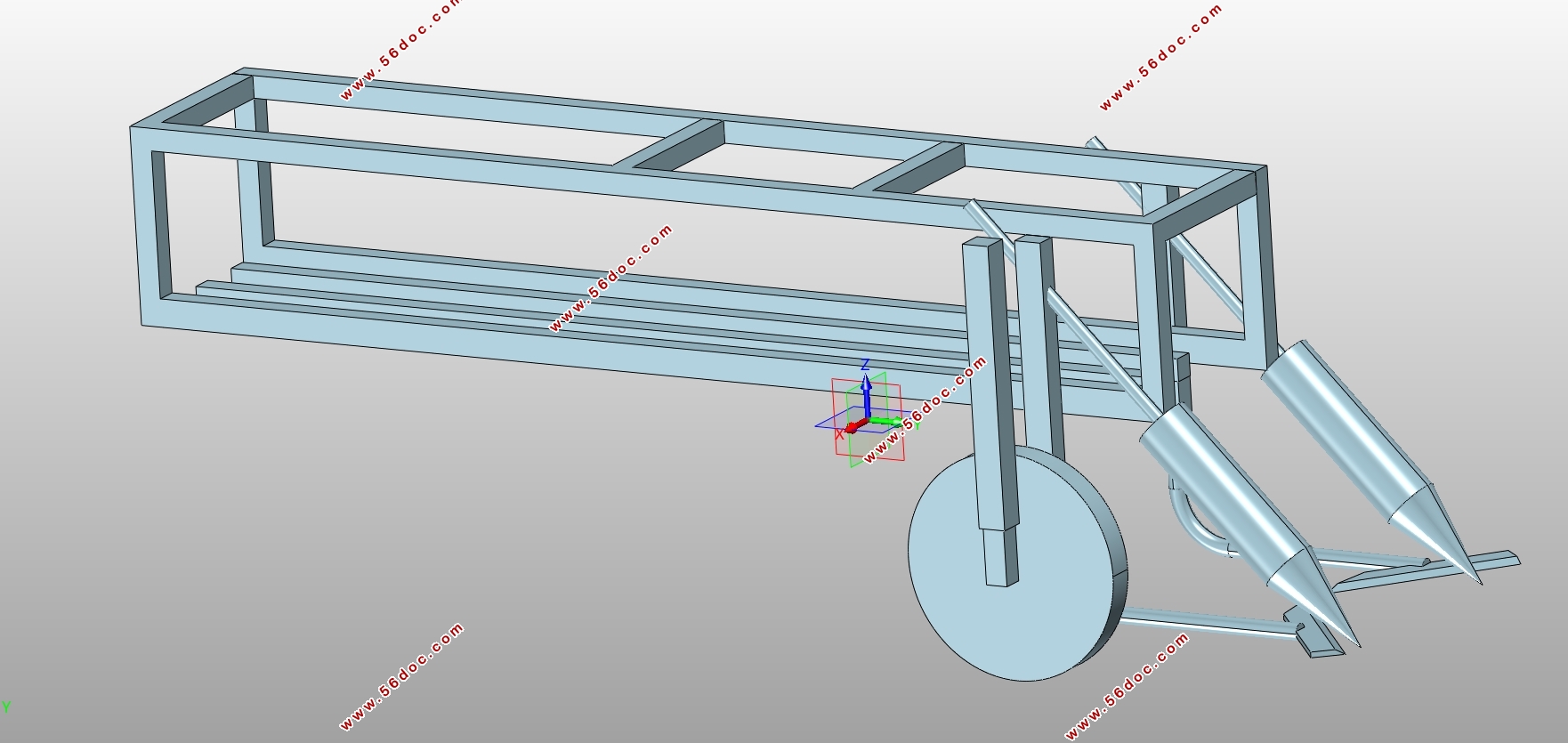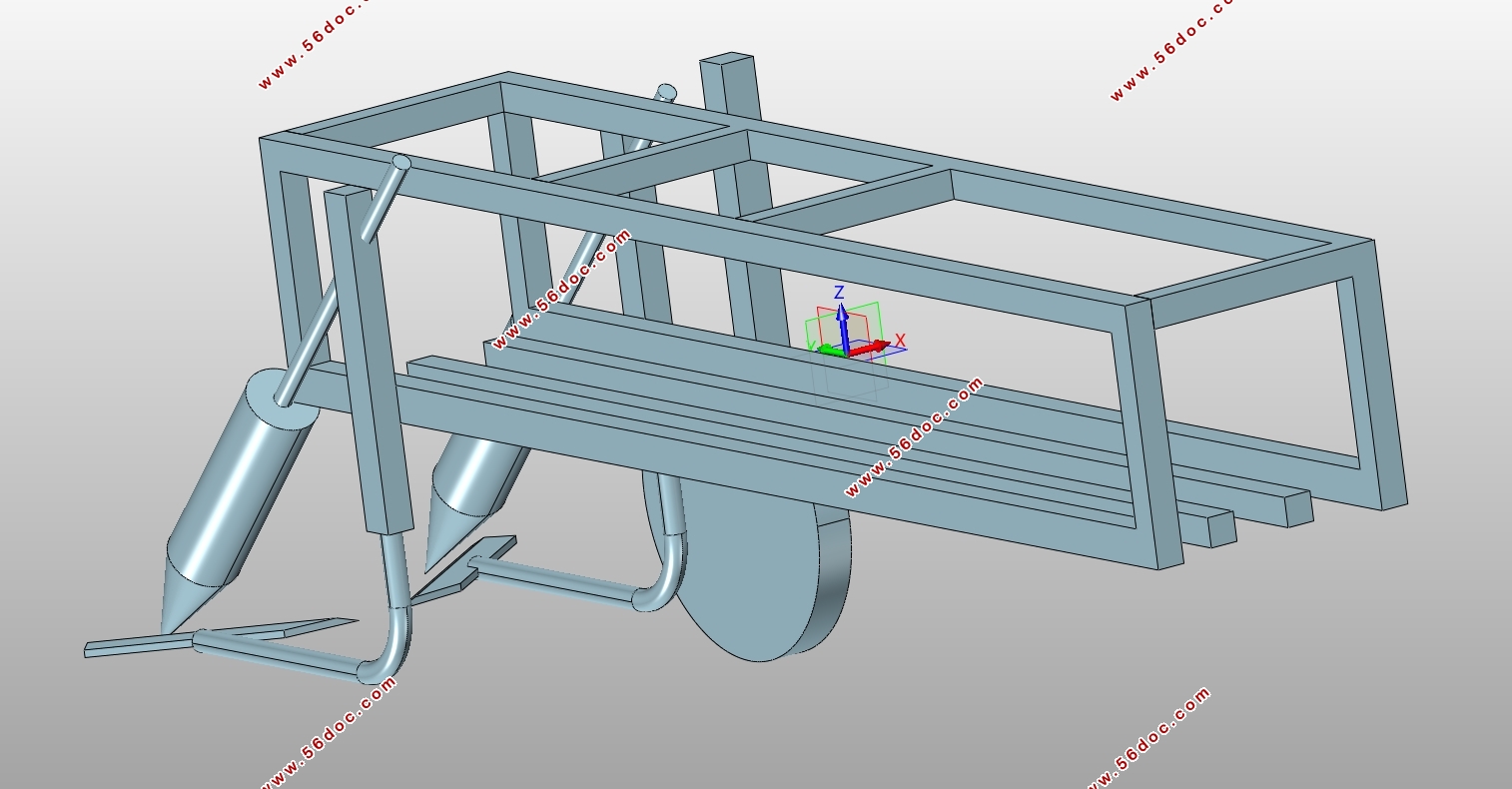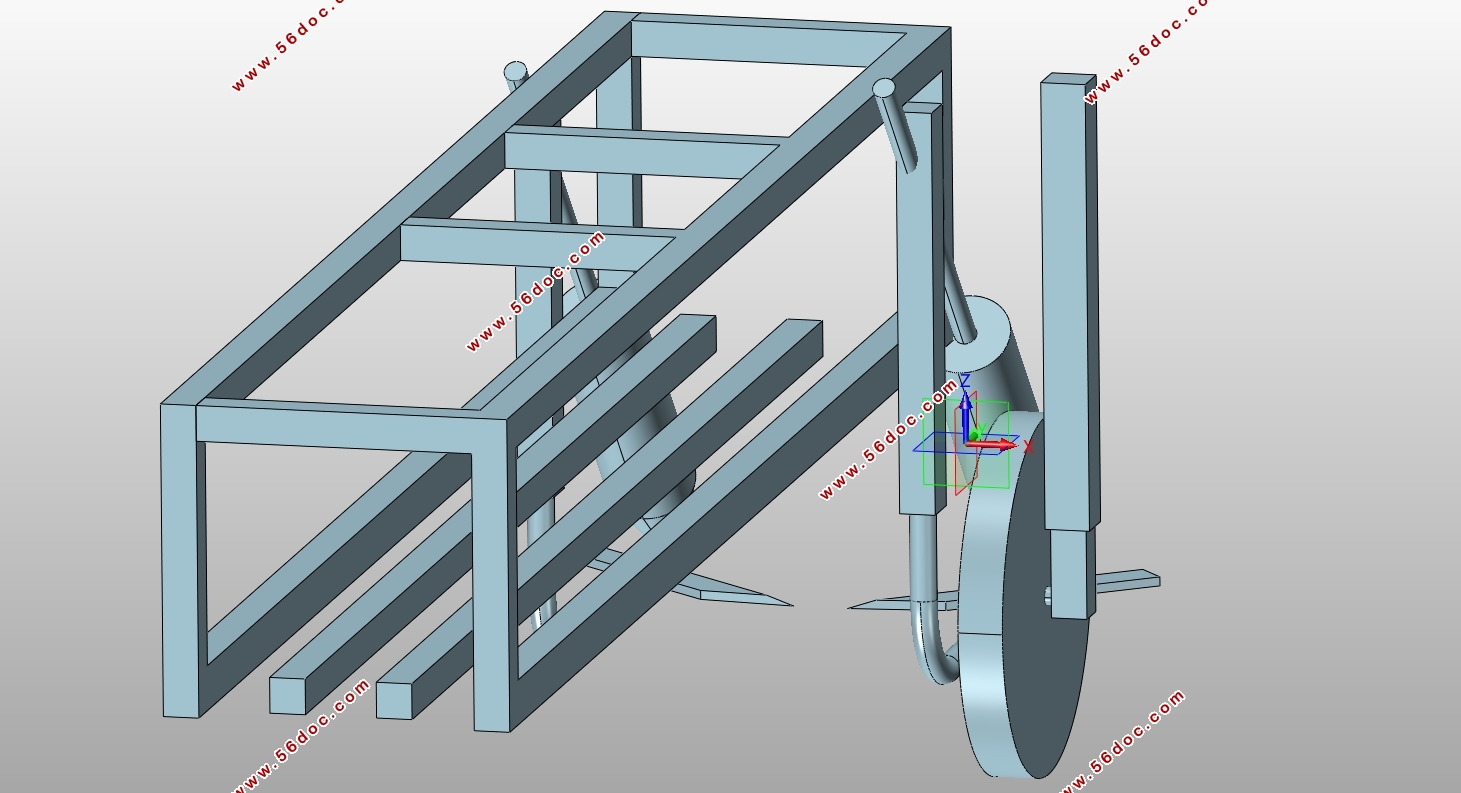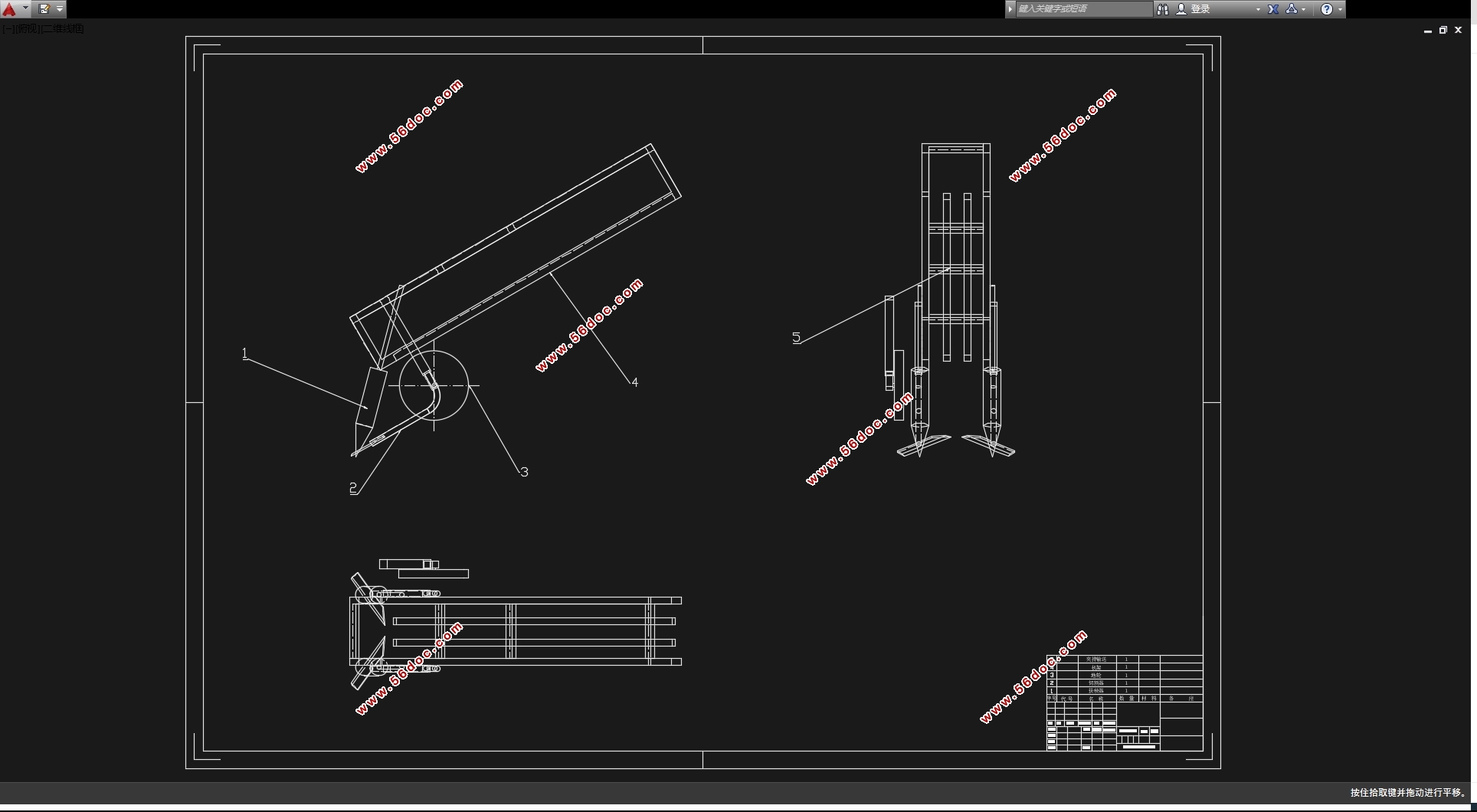花生收获机的设计(含CAD装配图,PROE三维图)(设计说明书14000字,CAD图3张,PROE三维图)
摘 要
花生是我国的制作食用油的主要产油作物。也是可以作为食用油的储备战略物资。而且我国大部分地区的耕地也非常适合花生的种植。随着我国农业的发展,我国的农田也在不断增多,种植花生的面积也在不断的增长。面对不断增长的花生种植面积,对于花生的收获也会是一个巨大的工作。所以,对于花生收获机的机械化是一个很重要的研究方向。因为花生的果实在地下,所以收获花生首先需要将地底的果实挖出来,然后再将土块与花生分离,最终将花生收集起来。而在实践的过程中,发现花生在地上的藤蔓对于机械收获来说也在一种阻碍。因为花生的藤蔓会对收割机构进行缠绕,影响机械收获的效率。所以在对地下果实收获之前,需要将地上的藤蔓进行处理。所以本文对于花生收获机的设计为分离装置、采摘装置还有动力传动装置。动力传动装置由联轴器和链传动构成。分离装置通过连杆机构带动隔离筛对花生和土块进行分离。采摘装置是由产片与角度调节装置构成。本文对于花生的收获机做出以下工作:对于花生收获机的发展过程的介绍,还有花生收获机的工作原理的介绍。收获机的总体设计方案;动力的计算和电机的选择。传动系统的设计;分离机构的设计;采摘机构的设计。对重要传动件的计算和校核。
关键词 花生收获机、花生、传动机构、采摘机构
ABSTRACT
Peanut is the main oil-producing crop for edible oil production in China. It can also be used as a strategic reserve of edible oil. Moreover, the cultivated land in most areas of China is also very suitable for peanut cultivation. With the development of China's agriculture, China's farmland is also increasing, and the area of peanut planting is also increasing. In the face of the growing peanut planting area, the harvest of peanuts will also be a huge task. Therefore, the mechanization of peanut harvester is a very important research direction. Because the fruits of peanuts are underground, it is necessary to dig out the fruits from the ground first, then separate the soil from the peanuts, and finally collect the peanuts. In the process of practice, it was found that the peanut vine on the ground was also an obstacle to mechanical harvesting. Because the vine of peanut will wind the harvesting mechanism, affecting the efficiency of mechanical harvesting. Therefore, the vines on the ground need to be treated before harvesting the underground fruits. Therefore, the design of peanut harvester in this paper includes separation device, picking device and power transmission device. The power transmission device is composed of coupling and chain transmission. The separating device drives the isolating screen through the connecting rod mechanism to separate peanuts and soil lumps. The picking device is composed of slice production and angle adjustment device. This paper makes the following work for the peanut harvester: the introduction of the development process of the peanut harvester, and the introduction of the working principle of the peanut harvester. Overall design scheme of harvester; Power calculation and motor selection. Design of transmission system; Design of separation mechanism; Design of picking mechanism. Calculation and verification of important transmission parts.
Keywords peanut harvester, peanut, transmission mechanism, picking mechanism
花生收获机的工作原理
本文设计的花生收获机主要由传动V带、抖动轮、机架、减速器、、传动链、地轮等机构组成。通过拖拉机的动力带动减速器。减速器通过V带带轮将动力传递到链轮上,链轮和链条将动力继续传递到各个工作单元中,比如分离装置、采摘装置等等,通过采摘机构将花生从土中产出,然后再由分离装置将土豆和带出的土块分离,最终通过收集装置将花生装入到收集箱中。






目录
摘 要 1
第一章 绪论 5
1.1 引言 5
1.2 国内外的发展现状 5
1.3 花生收获机的发展趋势 7
第二章 总体方案的设计 9
2.1整体布局的设计 9
2.2花生收获机的工作原理 9
第三章 零部件的设计 11
3.1功率的计算 11
3.2传动比 11
3.3链轮之间的链传动设计 11
3.3.1设计要求 11
3.3.2 设计过程 12
3.4 轴的设计 15
3.4.1链轮上力的计算 15
3.4.2材料 15
3.4.3计算轴的最小直径 15
3.4.4轴的结构设计 15
3.5轴的校核 16
3.6键的校核 17
3.7 轴承的校核 17
第四章 传动比的确定与减速器的选择 19
4.1传动比的确定 19
4.2减速器的选择 19
第五章 带轮和链轮的设计 20
5.1带轮的设计 20
5.2链轮的设计 24
a) 链轮的设计目的 24
b) 链轮的设计 24
c) 链轮材料的选择 25
d) 链轮机构的尺寸计算 25
5.3联轴器的选择 26
5.3.1联轴器上轴的设计 27
5.4链轮轴的设计和校核 27
5.4.1链轮轴的设计 27
5.4.2链轮轴的校核 28
5.5分离输送器的设计 29
5.5.1分离输送器的机构及工作过程 29
5.5.2杆条参数的确定 30
5.5.3分离输送器线速度的确定 31
5.6.1采摘铲的设计 33
总结 34
致谢 35
参考文献 36
|













